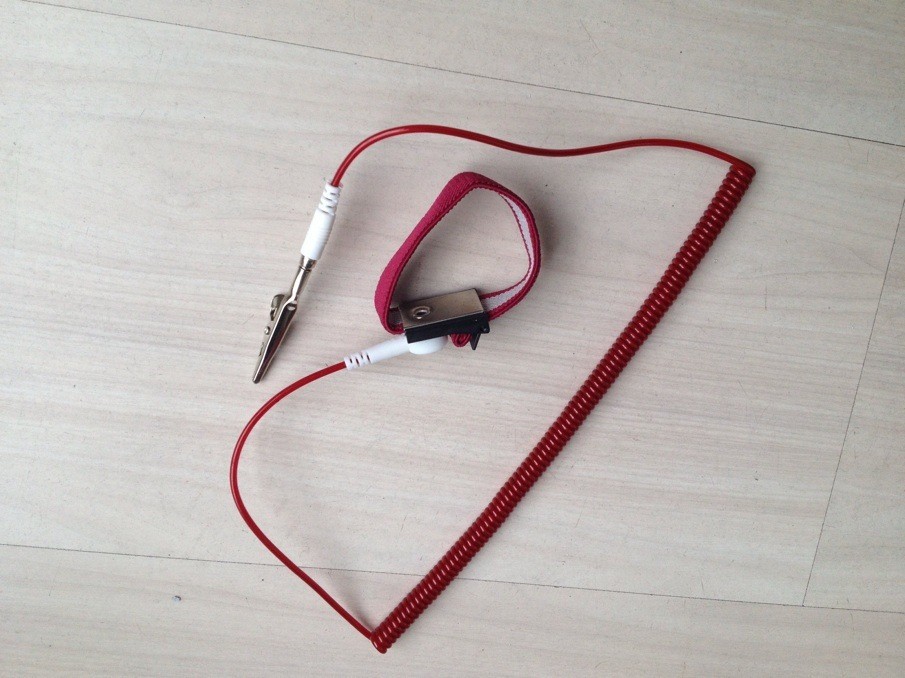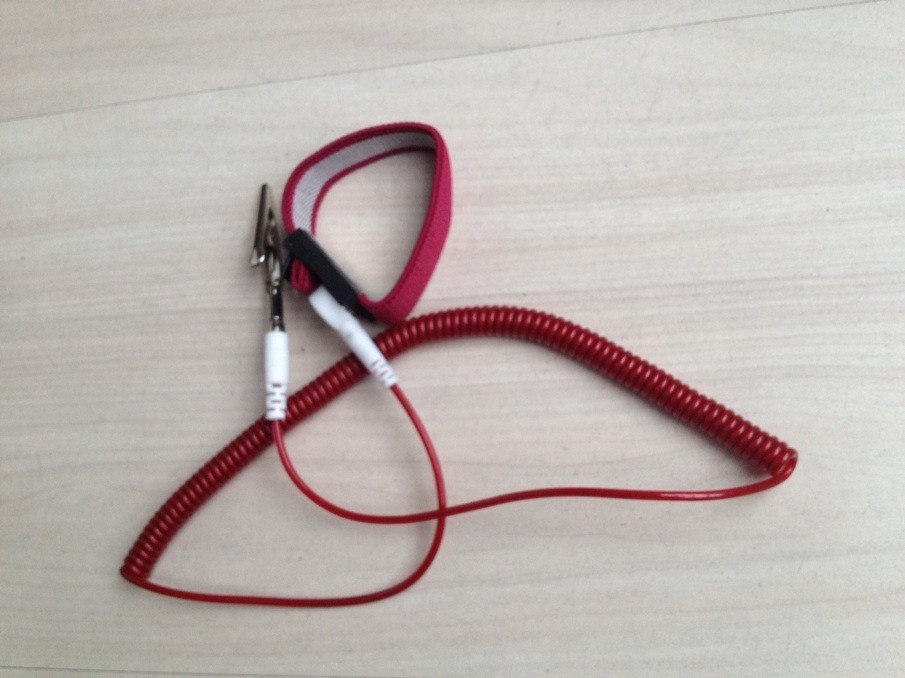Views: 0 Author: Site Editor Publish Time: 2025-04-19 Origin: Site








If you've got ever used an ESD wrist strap, you would possibly have puzzled why a 1 megaohm resistor is such a essential component. It’s a general function in most ESD wrist straps, but its function is not continually nicely understood. Does it truely serve a sensible function? And why particularly is 1 megaohm chosen?
In this article, we will delve into the function of the 1 megaohm resistor in ESD wrist straps, exploring its significance in static discharge control, the requirements that govern its use, and how it ensures each person security and effectiveness in electronics environments. Let’s take a nearer look!
An ESD wrist strap is a machine used to forestall electrostatic discharge (ESD), a surprising glide of electrical energy between two objects precipitated by means of contact or an electrical short. These wrist straps are usually worn through folks managing touchy electronics like circuit boards or laptop factors to make certain that any static electrical energy is safely discharged earlier than it can injury the equipment.
The inclusion of the 1 megaohm resistor is necessary to the characteristic of the wrist strap. Without it, the wrist strap ought to probably enable dangerous modern to float from the wearer to touchy equipment, defeating its purpose.
The 1 megaohm resistor in an ESD wrist strap serves a very specific purpose: it limits the current that flows through the strap. Here’s why this is necessary:
The resistor ensures that the discharge of static electrical energy doesn’t end result in a contemporary that is excessive adequate to motive damage or damage. If a man or woman have been to be carrying a wrist strap and stumble upon a high-voltage static discharge, the resistor prevents too lots present day from flowing via the wearer’s physique with the aid of limiting the quantity that can bypass thru the strap.
When an electrostatic cost is present, the wrist strap lets in that cost to waft safely to the ground. However, the inclusion of the resistor ensures that the discharge takes place at a protected rate. This prevents a unexpected shock to the wearer, which may want to probably lead to harm.
Most importantly, the resistor helps defend touchy electronics. Without the resistor, there ought to be an uncontrolled drift of cutting-edge via the system, which may want to injury refined components. The 1 megaohm resistor ensures that the discharge is gradual and controlled, preserving the integrity of each the character carrying the strap and the gear being handled.

You would possibly wonder, why precisely 1 megaohm? This parent is no longer arbitrary—it's primarily based on requirements set through the Electrostatic Discharge Association (ESDA). These pointers make sure that the wrist strap is fine in its feature whilst presenting protection to the user.
The ANSI/ESD S20.20 standard, which is the ESD Association's guiding principle for static manipulate programs, specifies that 1 megaohm is the required resistance for wrist straps. This price is extensively adopted because:
● It provides a safe balance between enough resistance to prevent high current flow and low enough to allow effective static dissipation.
● It has been proven to work across a range of environments, handling voltages of up to 240 volts (AC) safely.
● The standard resistance value is 1 megaohm ±20%, ensuring consistency in performance across different manufacturers.
While variations can exist, 1 megaohm is the commonly accepted standard and a reliable value for controlling the static charge and protecting both the wearer and equipment.
The inclusion of the 1 megaohm resistor impacts not only the effectiveness of the ESD wrist strap but also the overall safety of the user:
Without a resistor, any unexpected static discharge ought to end result in an dangerous quantity of modern-day passing via the user’s body. The resistor ensures that the contemporary is confined to protected levels, usually under 0.0005 amps (0.5 mA)—far beneath the threshold that ought to reason harm.
The resistor ensures that the wrist strap’s grounding gadget features as intended. By supplying an most appropriate resistance, it ensures that the static cost is discharged to floor except any issues.
An ESD wrist strap with the fabulous resistance additionally improves the sturdiness and durability of the product. The resistor protects towards put on and tear that ought to in any other case compromise the strap’s effectiveness.

While 1 megaohm is the standard, wrist straps can sometimes feature different resistance values. For example, some wrist straps may use a 0.8 megaohm resistor for use in certain low-voltage environments, or 2 megaohms for more sensitive applications. However, these variations come with important caveats:
● Non-standard Resistance: If the wrist strap uses a resistance other than the 1 megaohm standard, it must be clearly marked. These wrist straps may also feature a red color to indicate the difference.
● Customization for Specific Needs: In highly specialized environments, such as those dealing with higher electrical voltages, custom resistance values may be used. In these cases, the specific requirements for the facility should be documented in the ESD control plan.
Choosing the right ESD wrist strap is essential for any enterprise dealing with electronics, whether or not in meeting strains or restore shops. The 1 megaohm resistor ensures that personnel managing touchy aspects are grounded proper barring posing a hazard to themselves or the equipment. This is in particular vital in environments the place even small electrostatic discharges can reason irreparable injury to components.
● Safety for the User: The 1 megaohm resistor limits harmful electrical current.
● Effective Static Control: Provides a reliable discharge path for static electricity.
● Industry Standard: Meets ESDA standards, ensuring consistency across industries.
In conclusion, the inclusion of a 1 megaohm resistor in ESD wrist straps is critical for making sure each person security and the safety of touchy equipment. By controlling the present day flow, this resistor permits static electrical energy to discharge safely, stopping any practicable harm. Adhering to enterprise requirements such as ANSI/ESD S20.20 ensures that these wrist straps supply optimum overall performance and safety.
For groups in want of extraordinary ESD wrist straps, LEENOL provides optimum merchandise with the right resistance values, thoroughly compliant with enterprise standards for fine static discharge protection.
A: Yes, but if the resistance value is different, it must be clearly marked. Custom resistance values are sometimes used for specific applications.
A: ESD wrist straps should be tested regularly to ensure they are functioning correctly and safely. Testing ensures the resistor and grounding are still effective.